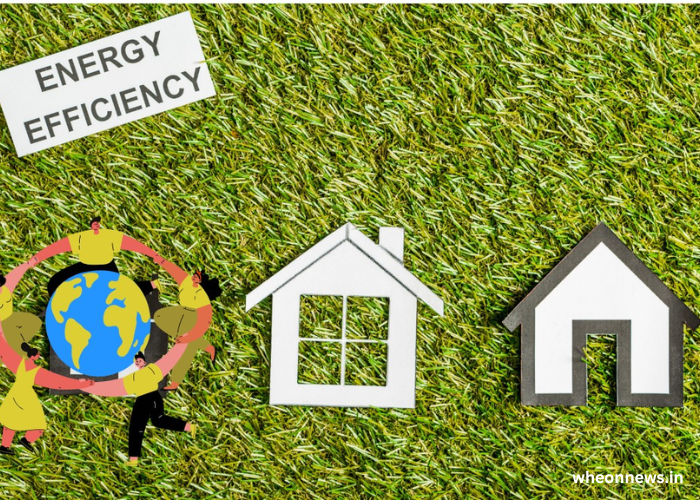
In today’s world, the environment is facing unprecedented challenges due to pollution, deforestation, and climate change. Adopting a lifestyle for environment (LiFE) is not just a choice but a necessity to ensure a healthier planet for future generations. This blog will guide you through simple yet effective ways to live sustainably, reduce your carbon footprint, and contribute to environmental conservation.
Key Points:
- A sustainable lifestyle helps reduce waste and conserve natural resources.
- Small changes in daily habits can have a big impact on the environment.
- Living sustainably benefits both the planet and your personal well-being.
What Is a Lifestyle for Environment?
A lifestyle for environment refers to making conscious choices in our daily lives that minimize harm to the planet. It involves adopting habits that reduce waste, conserve energy, and promote the use of eco-friendly products. For example, choosing to walk or cycle instead of driving reduces carbon emissions, while using reusable bags instead of plastic ones helps cut down on waste.
Living sustainably doesn’t mean sacrificing comfort; it’s about making smarter choices. For instance, switching to energy-efficient appliances or supporting local farmers by buying organic produce are simple yet impactful steps. By embracing a lifestyle for environment, we can collectively work towards a greener, healthier planet.
Why Is a Sustainable Lifestyle Important?
The importance of a sustainable lifestyle cannot be overstated. Our planet’s resources are finite, and overconsumption is leading to environmental degradation. For example, excessive use of plastic has resulted in massive ocean pollution, harming marine life and ecosystems.
Adopting a lifestyle for environment helps address these issues. It reduces greenhouse gas emissions, conserves water, and protects biodiversity. Moreover, sustainable living often leads to cost savings. For instance, using solar panels can lower electricity bills, while growing your own vegetables reduces grocery expenses.
| Traditional Lifestyle | Sustainable Lifestyle |
|---|---|
| High energy consumption | Energy-efficient practices |
| Reliance on single-use plastics | Use of reusable items |
| Excessive waste generation | Minimal waste production |
How Can You Adopt a Lifestyle for Environment?
Adopting a lifestyle for environment is easier than you might think. Start by making small changes in your daily routine. For example, reduce water waste by fixing leaks and taking shorter showers. Switch to renewable energy sources like solar or wind power if possible.
Another effective way is to practice the 3 R’s: Reduce, Reuse, and Recycle. Reduce your consumption of non-essential items, reuse products whenever possible, and recycle materials like paper, glass, and metal. Additionally, support eco-friendly brands that prioritize sustainability in their production processes.
| Action | Environmental Impact |
|---|---|
| Using public transport | Reduces carbon emissions |
| Composting food waste | Decreases landfill waste |
| Planting trees | Improves air quality |
What Are the Benefits of a Lifestyle for Environment?
A lifestyle for environment offers numerous benefits, both for the planet and for individuals. Environmentally, it helps combat climate change, preserve natural habitats, and reduce pollution. On a personal level, it promotes healthier living. For example, eating organic food reduces exposure to harmful pesticides, while cycling or walking improves physical fitness.
Moreover, sustainable living fosters a sense of responsibility and connection to nature. It encourages mindfulness about resource consumption and waste generation. Communities that embrace eco-friendly practices often experience improved air and water quality, leading to better overall health.
What Are the Challenges of Adopting a Sustainable Lifestyle?
While the benefits of a lifestyle for environment are clear, there are challenges too. One major hurdle is the initial cost of eco-friendly products and technologies. For instance, solar panels and electric vehicles can be expensive, though they save money in the long run.
Another challenge is the lack of awareness and accessibility. In some areas, recycling facilities or public transportation may be limited, making it difficult to adopt sustainable practices. However, these challenges can be overcome through education, government support, and community initiatives.
Note: Start small and focus on one change at a time. Overwhelming yourself with too many changes can lead to burnout.
How Can Technology Support a Lifestyle for Environment?
Technology plays a crucial role in promoting a lifestyle for environment. Innovations like smart thermostats, energy-efficient appliances, and electric vehicles make it easier to reduce energy consumption and carbon emissions. For example, smart thermostats adjust heating and cooling based on your habits, saving energy and money.
Additionally, apps and online platforms can help you track your environmental impact. Tools like carbon footprint calculators provide insights into your energy usage and suggest ways to reduce it. By leveraging technology, we can make sustainable living more accessible and effective.
Reminder: Always research and choose technologies that align with your sustainability goals.
Conclusion
Adopting a lifestyle for environment is a powerful way to protect our planet and ensure a sustainable future. By making small, conscious changes in our daily lives, we can reduce waste, conserve resources, and combat climate change. Whether it’s using reusable products, supporting eco-friendly brands, or leveraging technology, every action counts.
Remember, sustainability is a journey, not a destination. Start today, and inspire others to join you in creating a greener, healthier world.
FAQ’s
- What does a lifestyle for environment mean?
It means making daily choices that minimize harm to the planet, such as reducing waste and conserving energy. - How can I start living sustainably?
Begin with small steps like using reusable bags, reducing water waste, and recycling. - What are the benefits of a sustainable lifestyle?
It helps protect the environment, saves money, and promotes healthier living. - Are eco-friendly products expensive?
While some may have higher upfront costs, they often save money in the long run. - Can technology help in living sustainably?
Yes, technologies like smart thermostats and electric vehicles make sustainable living easier and more efficient.
